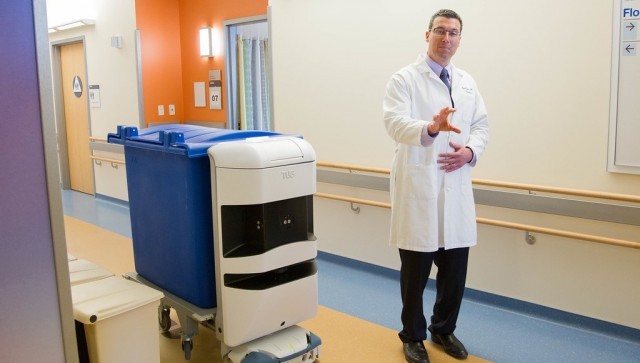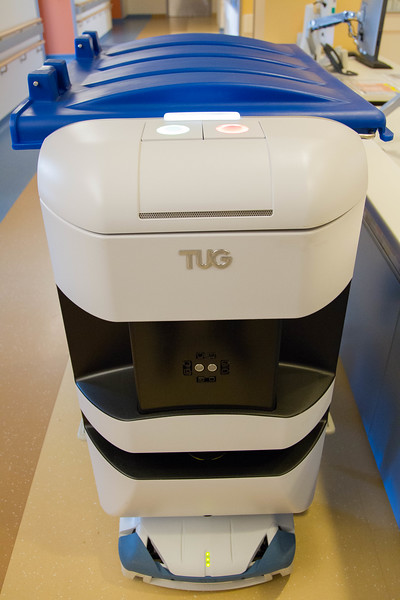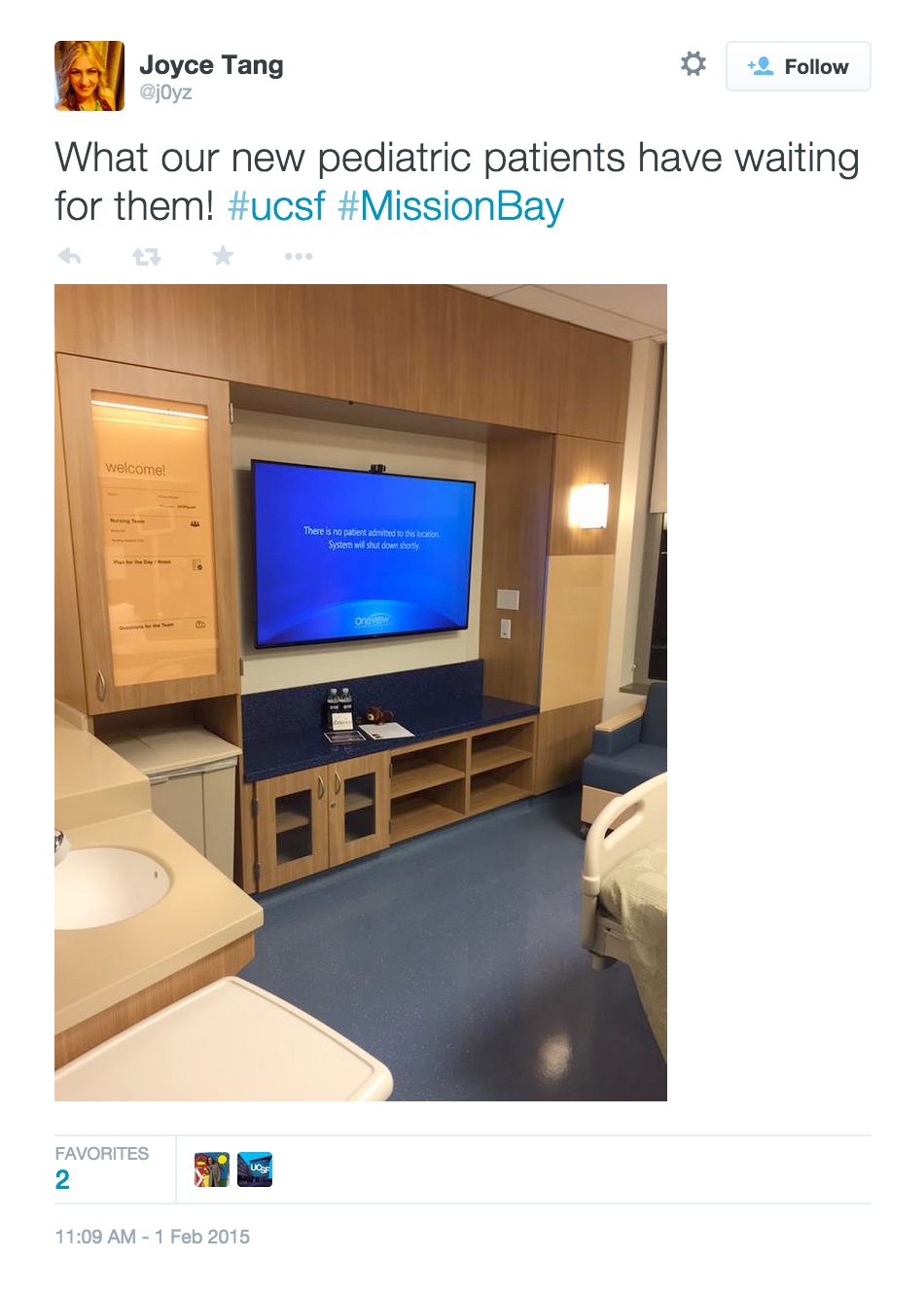
UC San Francisco’s new $1.52 billion Medical Center at Mission Bay in San Francisco – paid for out of the deep pockets of Salesforce founder Marc Benioff — opened up over the weekend.
The facility includes three hospitals: one is for women, another for children and a third for cancer patients. The new Med Center is full of the high-tech bells and whistles you’d expect from a Silicon Valley hospital.
Let’s start with the world’s largest fleet of autonomous robots, called “Tugs” which can pick up and deliver medicine from the pharmacy, along with clean laundry and meals, across the hospital’s 800,000 square-foot facility.

The robots — which, depending on their function, can look something like a recycling bin perched atop a vacuum cleaner — require biometric IDs to dispense medications and can carry up to 1,000 pounds apiece, according to Computer World:
The robots work largely around the clock, though two of them get nights off at a time. They’re keyed to be able to open doors, call elevators and roam around the hospital by themselves, requiring human intervention only if they manage to get stuck. On any given day, UCSF Medical Center’s computer simulations estimate that a Tug robot will traverse 12 miles, or about 300 miles a day across the entire fleet.
